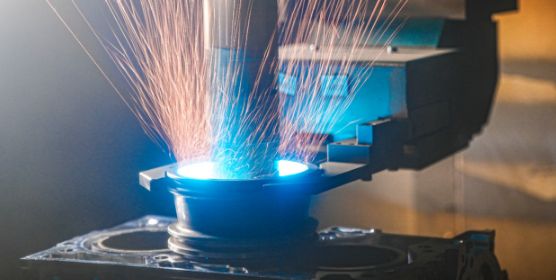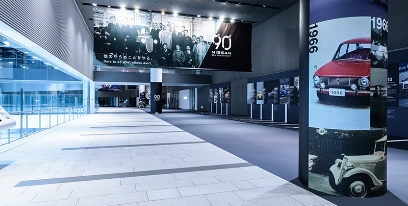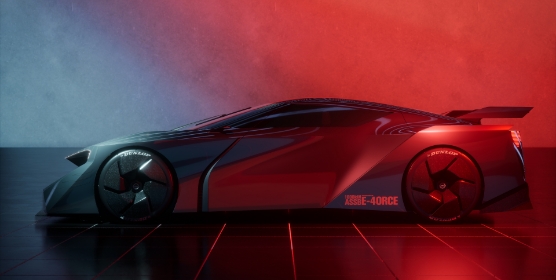Legend 09: Design illustrates culture, Shozo Sato
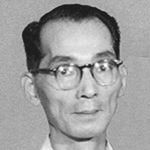
Shozo Sato
Shozo Sato joined Nissan Motor in 1937 and was transferred to the Design Department in 1948. He was appointed the head of the Body Design Team in 1950 and became the first head of the Design Department in 1954. It is believed that the first Bluebird (the 310 model) was based on his sketch. The Datsun Sedan 112 that he designed won the 1956 Mainichi Design Award in the industrial category, an award that the Mainichi newspaper established in 1955 to improve industrial design in Japan. Sato left Nissan Motor for health reasons in 1959.
To do the job right
Story
teller:
Isao
Sano
Isao
Sano
was
assigned
to
Nissan
Motor’s
newly
established
Design
Department
and
it
was
there
that
he
met
Shozo
Sato,
who
was
his
boss
and
also
the
person
with
overall
responsibility
for
design
work
at
the
automaker
in
that
period.
Imitatio Cecili was the author of a popular monthly column called “Reports on Vintage Cars” that appeared in Car Graphic magazine during the 1960s and introduced cars of the 1920s with beautiful watercolour illustrations. In fact, however, Cecili was the pen name of Shozo Sato, who had to write under a pseudonym because he had recently been an employee of Nissan Motor, where he had served as the head of the Design Department.
‘His design sketches were all done in watercolours and every one of them was just amazing. You could see the multiple facets of the structure in three dimensions,’ recalled Isao Sano, whom we interviewed to ask about Sato.
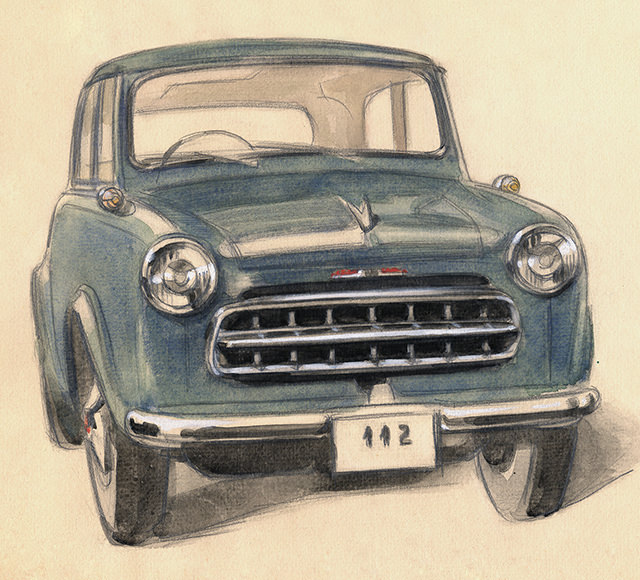
Sato’s
sketch
of
the
Datsun
112
using
the
watercolour
technique
*Watercolour
technique
involves
painting
on
Watson
Paper
using
watercolours.
Sato
excelled
at
this
technique.

The Datsun 112
Sano was born in Tokyo in May 1932 and joined Nissan Motor in 1955 upon graduating from the Tokyo University of the Arts. He met Shozo Sato for the first time when he was still a university student.
‘In 1955, it was unusually difficult to get a job. This was the so-called employment ice age in Japan and most companies were not hiring new graduates. However, Nissan needed to add two people and I was one of them. Mr Sato took the trouble to travel all the way to my university in Ueno, Tokyo, to see me,’ he said, remembering his first impression of Shozo Sato.
‘I was interested in designing ships at the time and had worked as a trainee at Mitsubishi Shipyard during my third year at university. One of my university instructors recommended me to Mr Sato, because he knew that I had often said I wanted to design ships and he thought that working at a carmaker would be acceptable for me because both ships and cars were things that moved. I remember explaining to Mr. Sato about my drawings even though I can’t recall just what they were. I went through a couple of interviews with Nissan and then received an offer letter. After that Mr Sato contacted me and asked me to start at the company right away. So I was working there about once a week before I officially joined the company.’
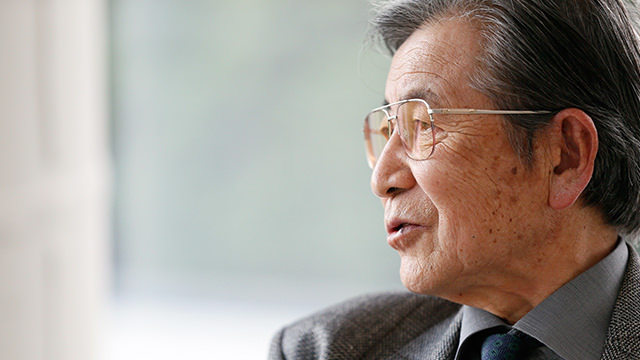
Mr. Sano gave interview.
What is required of a designer

Sketch of the Nissan 480 truck (introduced in 1953).
One day, Sato ordered Sano to ‘draw a copy of the chassis layout of this sports car.’ With hardly any knowledge of automobiles, it proved to be a tedious job for Sano but he finished the drawing. Then Sato ordered him to put body panels on the drawing he had just made.
‘Mr Sato took time to explain in detail how a car is made by going over each and every part of the chassis layout with me,…pointing out that this was the suspension and this was the transmission…. At the time I felt bad because I thought it must have been a major problem for him to teach such basic things to a young man who had just joined a car company with no practical knowledge of cars. However, it is essential for a designer to understand the structure and layout of a car. A designer who doesn’t have that knowledge can’t design a car that not only looks good but also works as a package. It was only after some time that I realised that this must have been the concept that Mr Sato was trying to teach me.’
The Design Department that Sano was assigned to eventually become the Global Design Center but at the time it was only a year old. Before the creation of the section, there were ‘modellers’, but their job related to only part of the body design process. In fact, there was no term for the job that came to be the province of designers. In those days, carmakers designed engines and chassis, but they outsourced the majority of the bodywork, which was a general design method. However, as demand for cars gradually increased, automakers began to believe that it would be more efficient to employ an integrated process that started with design and extended to manufacturing and included the car bodies. Nissan responded to this need by creating the Design Department, an independent section that specialised in designing the bodies of the company’s motor vehicles.

Coloured pencil sketch of the Nissan Junior (introduced in 1956).
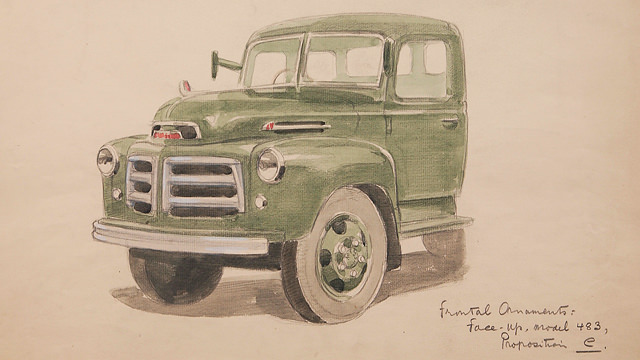
Sketch of the Nissan 483 truck.
‘I
didn’t
even
have
a
driver’s
licence
when
I
joined
Nissan.
The
Design
Department
had
test
vehicles
that
the
engineers
used,
for
example
for
commuting
and
for
testing,
and
to
get
practice
behind
the
wheel
I
drove
those
cars
while
they
were
in
the
garage
for
maintenance.
I
didn’t
even
know
how
cars
were
made
at
the
time,
but
actually
driving
myself
stirred
my
interest
in
automobiles.’
How
did
Sano
see
Shozo
Sato
as
a
man
when
he
started
to
work
with
him?
‘In modelling, he was a strongman who was involved in everything. It wasn’t that he didn’t trust his subordinates. I believe it came from his sense of responsibility for the work. He must have felt that he wanted to have, or that he had a responsibility to have, a thorough understanding of everything in detail whenever he was engaged in the creation of anything,’ said Sano.
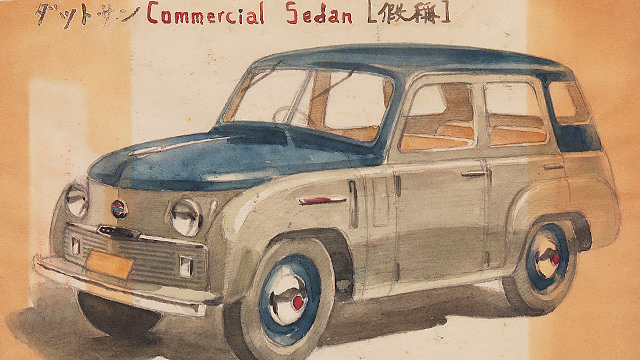
Sketches of the Datsun commercial sedan.

Naturally, and quite rightly, Sato could be very strict with his subordinates. ‘He scolded me often,’ Sano recalled. ‘But he was not the kind of person who would go into a rage. He recognised when something was done right, even if a subordinate had done the job. I remember when I was working on making a quarter-size clay model from a sketch of his, but his sketch wasn’t really three dimensional, so I went and told him about it. He didn’t say anything. He just nodded and accepted the criticism. He wouldn’t get angry over nothing; when he became angry, there was a reason. And when he saw something, he would address it regardless of who the person was.’

Sketch of the Datsun 20.
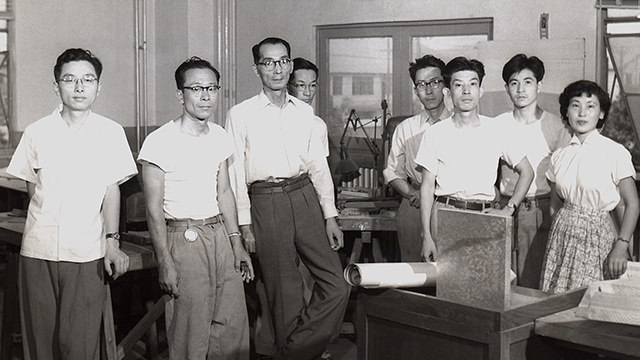
The Design department started in 1954 with only eight employees (Sato is the third from the left). The moment when ‘Nissan Design’ was born.
The ones who tended to bear the brunt of his anger were not the people who worked under him in the Design Department but rather people who were outside the section. Sato was known to be very frank and speak his mind at meetings of section and department heads and this reflected his very clear concept of what car design was and his strong commitment to the concept.
Established the foundation of Nissan design
Sano recalls Shozo Sato as a tall, slender man who was a bit of a dandy and almost looked more like an engineer than a designer, but he was not quite like an ordinary engineer, either. ‘Engineers tend to consider a car a piece of machinery. Their concerns revolve around the target features and performance of the car. In contrast, Mr Sato had a vision of life with a car and a culture nurtured with cars.’
In a company that manufactured cars and tended to focus on features and performance, Shozo Sato often demonstrated his anger with people outside his section when it came to the subject of making cars.
‘He was a heavy smoker and there were stacks of empty cigarette boxes on his desk. And he looked so cool with a cigarette hanging out of the corner of his mouth,’ Sano laughed. ‘He also loved smoking a pipe. One day Mr Sato returned to his desk from the regular meeting of department and section heads in a bad mood and we figured that things must have gone badly at the meeting. He said that he’d been clenching his fists so tightly that he thought his fingernails would be drawing blood from his palms and because he was caught up in his emotions, he stuffed too much tobacco into his pipe, so it wouldn’t light. I think that he must have been speaking out for what he believed in at those meetings, so that the Design Department could do the job right and so that the right work would be approved as such.’
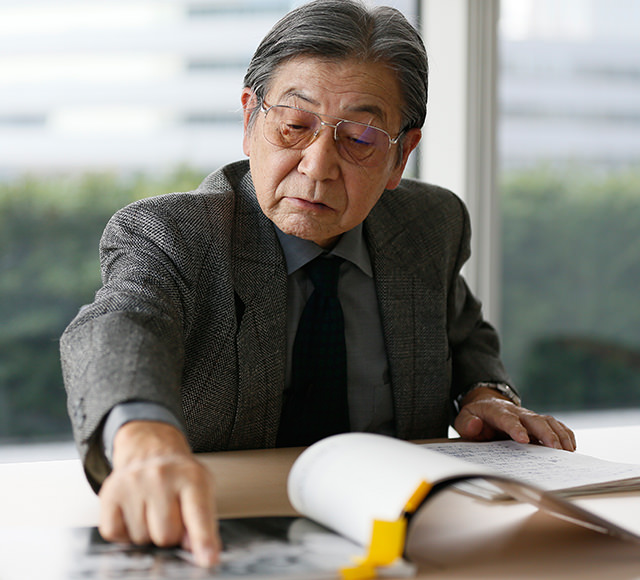
Mr. Sano gave interview.

Modelling
Technique
Clay
modelling
is
said
to
have
started
in
the
US
in
1919,
when
water-based
clay
was
used
for
modelling.
The
idea
was
groundbreaking
because
clay
made
it
possible
to
make
multiple
corrections
easily,
as
opposed
to
the
wood
modelling
generally
used
up
until
then.
Shozo Sato might have had a very strong will, but in fact he was not so strong physically and he was forced to take sick leave more than once.
‘Even when he stayed home for health reasons, he was always thinking about work. At one point in time he lived in the Ofuna area in Kanagawa Prefecture and there was a Nissan chassis designer who lived in the same neighbourhood. When Mr Sato was home sick, almost every day he would write a memo about work, jotting down his thoughts, and give it to this designer to deliver to us. We would read it, work out our response, and then go see him at his house right away. But before we actually went up and knocked on his door, we’d go into a coffee shop and have an ad hoc strategy meeting, saying things like “We should talk about good things first, so he’ll think we’re doing a good job,” and “Let’s leave the bad news that might make him scold us until later” (laughter). We called this “the Ofuna courier run”.’
Shozo Sato was not only equipped with a strong sense of responsibility and high standards regarding work. He also had some personal magnetism. ‘One day out of the blue he said he was going to do an oil painting of an Austin A50 and he put an easel next to his desk. The oil paint had a strong smell and it was unpleasant for those of us working nearby,’ recalled Sano with laughed. ‘Also, his desk was covered with stacks of documents and he left them there so long that their colours faded. He wouldn’t do so-called desk work as a section head, but he couldn’t care less and he would say with a smile things like, “I’ve heard that I’m the worst-performing section head in the entire company. I wonder if it’s true.” He was a likeable chap. He just had that something that made people like him and care about him.’

Working in the Ogikubo Model Room in Tokyo sometime between 1955 and 1965.
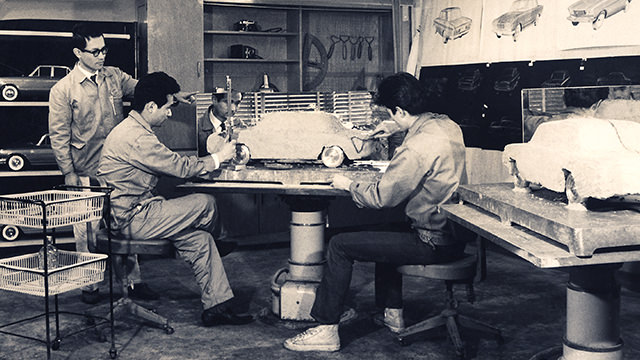
Be responsible for culture
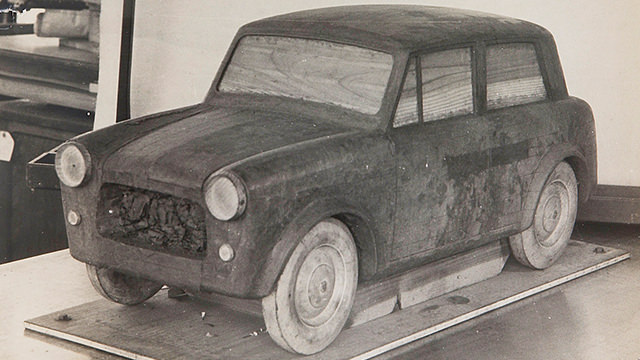
1/5-scale oil-clay modbased el of the Datsun 110.
So what kind of designer was Shozo Sato? Was he a designer who came up with unique ideas based on extraordinary techniques? Sano replied, ‘Mr Sato’s designs were extremely simple. He modelled with natural curves of planes and turned them into sophisticated designs with thought-out detail. He demanded a coherent design that naturally created two planes on drawing one single line. He didn’t like designs that were half sharp or half perfect. He used to tell us to think of the structure. He must have meant to understand a car in three dimensions and design it in a way that would not destroy the harmony anywhere.’
At the time, the design of American cars was the mainstream in the world, as the embodiment of the American dream. Its influence was such that even Mercedes-Benz adopted tail fins. Sano testified to this trend, saying, ‘Certainly there was a trend that all carmakers had to reflect the latest fashions of the time. However, this was incompatible with Mr Sato’s concept. Right to the end, he adhered to his pure and simple design approach. As a result, he won the Mainichi Design Award in 1956. His design was accepted and recognised in Japan.
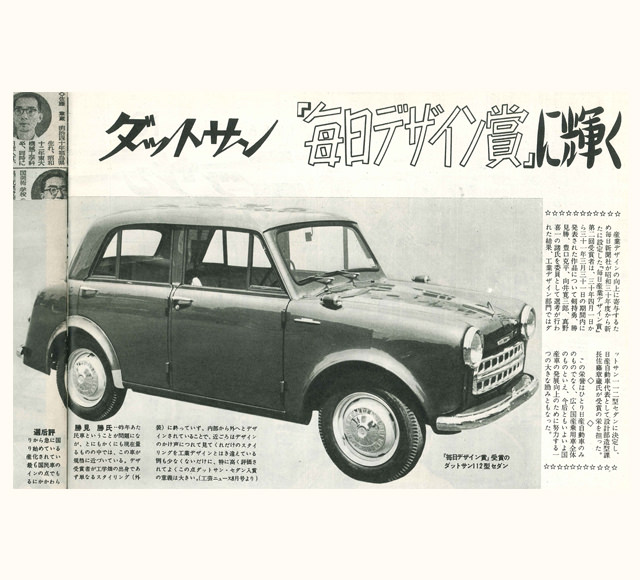
Articles on the winning of the Mainichi Design Award.
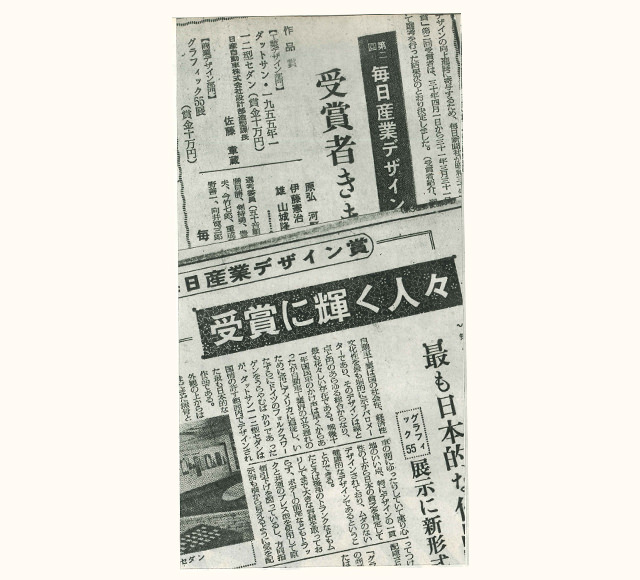
‘During that period something else was troubling Mr Sato. He was in search of consistency between the design he believed in and the design that the target buyers of cars or the majority of consumers desired. This is, of course, an eternal challenge for designers.’
Sano recalls what Sato used to say all the time: ‘Think about how you can take responsibility for culture. Culture is the integrality of the proof that you are living, of how you want to live your life, of what kind of dreams you have. And what happens when you put a car into this process is that it can be interpreted as wishes, people’s wish to drive certain cars, or their wish to live with other types of cars. Design with consideration for these thoughts and dreams of people. Don’t put corporate convenience or logic at the centre of your design, but don’t ignore them completely either. That is the work of a professional designer. I believe that was the message that Mr Sato wanted to convey.’
Shozo Sato created the foundation of Nissan design. Sano was a direct disciple of Shozo Sato and concluded our interview by expressing his hope that Nissan would continue to adhere to Sato’s ideas into the future.
Profile of the writer
Isao
Sano
Isao
Sano
was
born
in
Tokyo
in
May
1932.
He
joined
Nissan
Motor
following
his
graduation
from
the
Tokyo
University
of
the
Arts
in
1955.
After
he
retired
from
Nissan
in
1987,
he
served
as
the
president
of
Creative
Box,
a
Tokyo
company
created
as
a
satellite
design
studio
base
for
Nissan.
After
he
left
Creative
Box,
he
founded
the
Katachi-no
Kai,
a
social
association
for
people
who
had
once
worked
in
Nissan’s
design
department.
Sano
says
of
his
reason
for
organizing
the
association,
‘I’m
not
someone
who
believes
in
fate,
but
it
was
by
chance
that
we
all
ended
up
working
in
the
Design
Department
of
Nissan.
I
wanted
to
create
a
sort
of
friendly
gathering
place.’
It
consists
of
informal
groups
that
meet
under
such
themes
such
as
golf,
painting,
and
pottery.
It
is
also
largely
responsible
for
the
creation
of
Nissan’s
design
archives.










